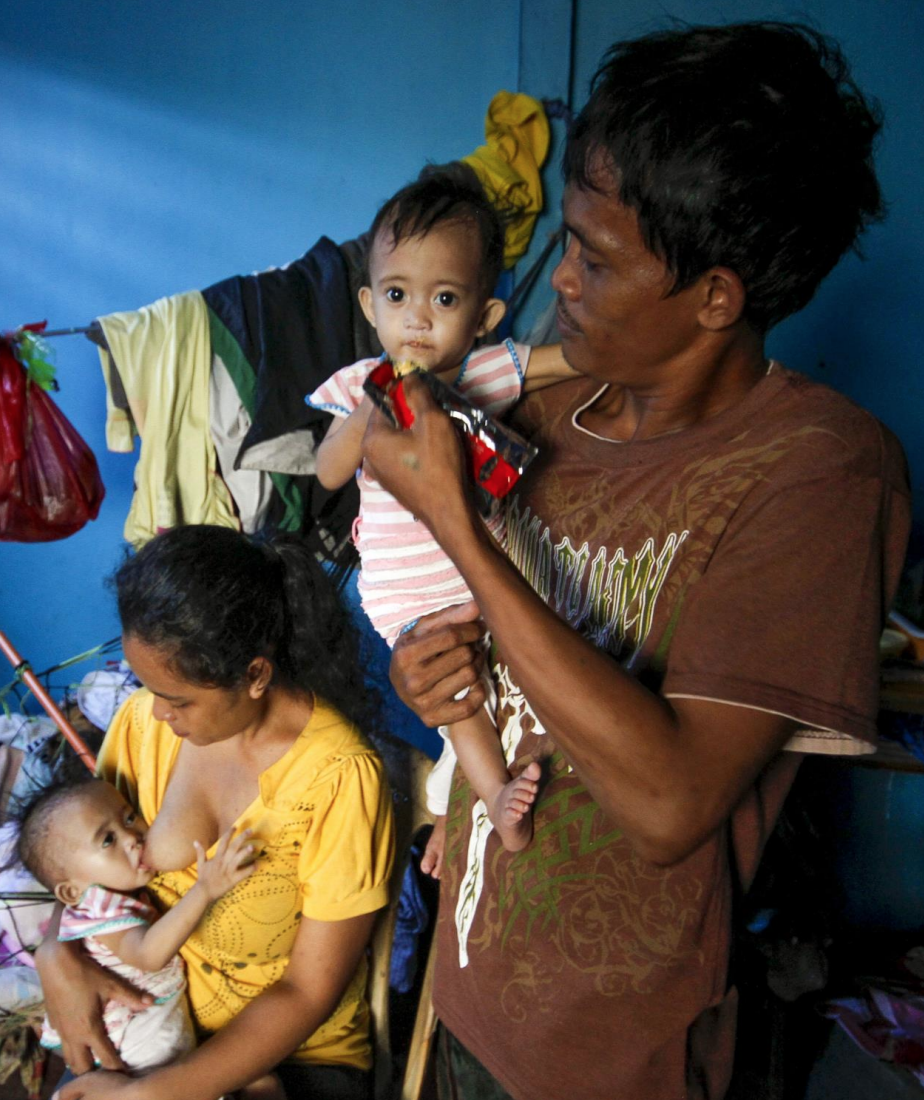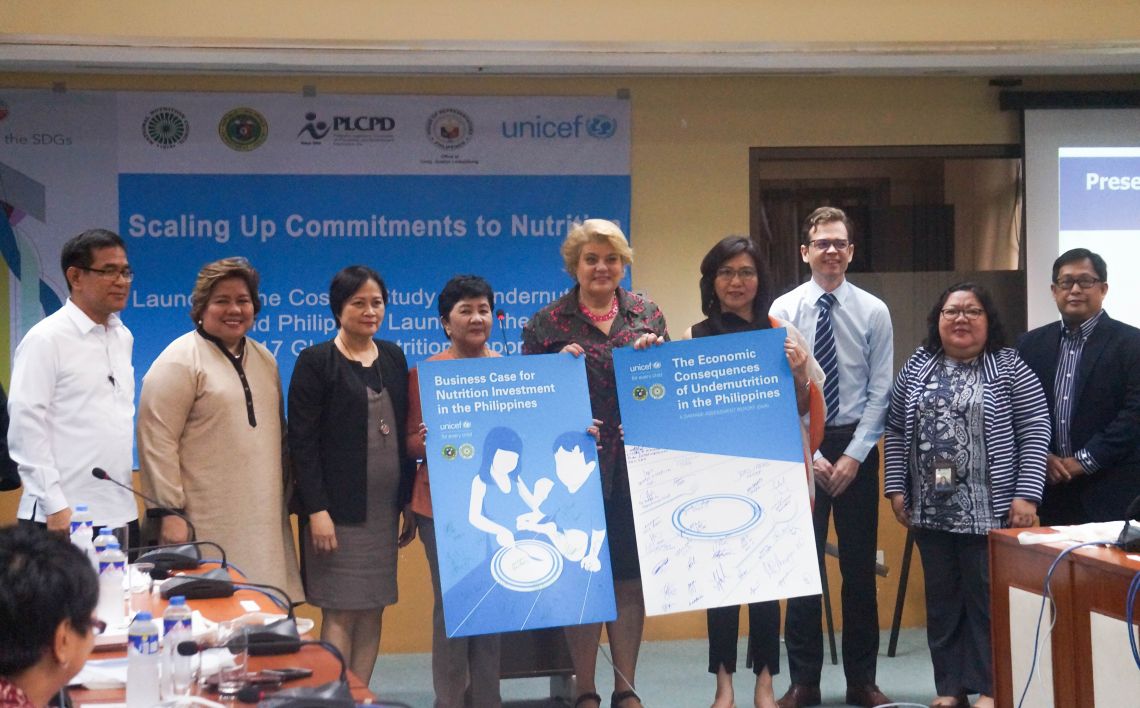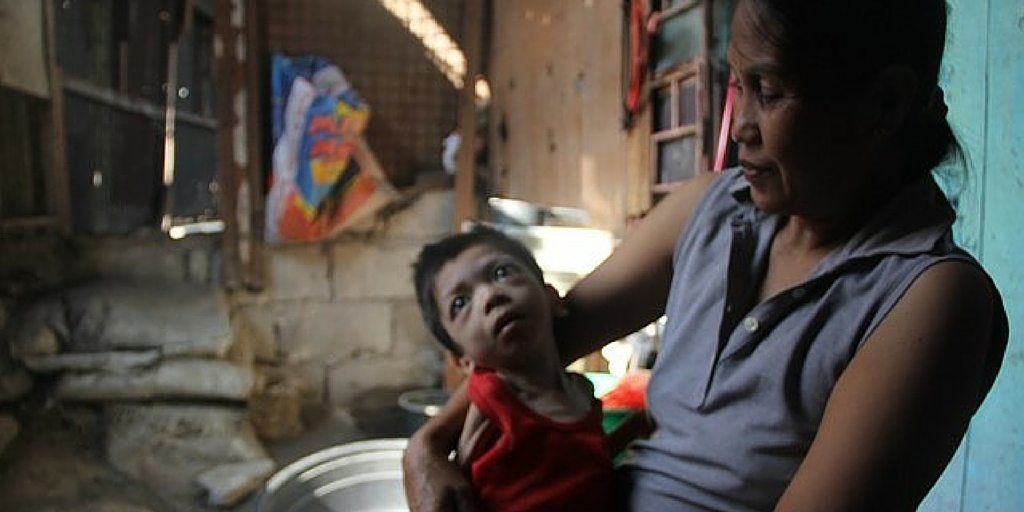 The UNICEF, DOH, NNC and the Philippine Legislators’ Committee on Population and Development launched Jan. 23 studies that reframe widespread undernutrition as an urgent economic problem in the country. Photo from UNICEF Philippines
The UNICEF, DOH, NNC and the Philippine Legislators’ Committee on Population and Development launched Jan. 23 studies that reframe widespread undernutrition as an urgent economic problem in the country. Photo from UNICEF Philippines
When Lotta Sylwander first saw “Little Jomar” at an indigenous village in Aborlan town in Palawan more than a year ago, she mistook him for a four-month-old.
The boy was in fact already a year old but weighed only three kilos.
“He couldn’t even cry. That’s how weak he was,” said Sylwander, who represents the United Nations Children’s Fund (UNICEF) in the Philippines.
Jomar isn’t a mere charity case, advocates said, but a reflection of the government’s inaction on widespread undernutrition, which not only afflicts some 28 million Filipinos but also significantly dents the economy by about $4.5 billion or P220 billion a year.
Two studies recently launched by the UNICEF, Department of Health (DOH), National Nutrition Council (NNC), reframes undernutrition from a moral and humanitarian issue to an urgent business case.
The problem on undernutrition will continue to cripple the economy if the government doesn’t invest in nutrition, the studies showed.
“The high cost of doing nothing to lift the economic burden on undernutrition in the Philippines in a compelling economic argument for taking urgent action,” stated one of the studies, “Business Case for Nutrition Investment in the Philippines.”
Sylwander said when supertyphoon Haiyan wrecked parts of the country four years ago, it cost the government $3.5 billion.“No one would recommend that Haiyan happened every year,” she said, comparing it to billions in losses because of the government’s failure to address malnutrition.
The overall economic loss–$4.5 billion–represents future productivity losses worth $3.1 billion due to stunted and anemic children; foregone lifetime earnings of $667 million due to child deaths; a work performance deficit of $233 million due to anemic adults; and an excess healthcare cost of $379 million, noted the other study, “The Economic Consequences of Undernutrition in the Philippines.”
“The costs of malnutrition in the Philippines are astronomical,” Sylwander said, “but why is it that it seems that malnutrition in the Philippines is sort of hidden issue that is not dealt with properly?”
Under President Rodrigo Duterte, the NNC launched the Philippine Plan of Action for Nutrition (PPAN) 2017-2022, the country’s framework for improving the nutrition situation of Filipinos and reducing inequality, child and maternal mortality.
The PPAN aims to reduce levels of child stunting and wasting, micronutrient deficiencies and obesity among children and adults.
The NNC has yet to determine the final budgetary requirement for PPAN in March, although certain services are ongoing and funded by the DOH.
Meanwhile, in Congress, a bill that seeks to establish a healthcare program that would cover nutrition and health services for pregnant mothers and children until two years old, or the first 1,000 days, has remained pending since August 2017.
 The UNICEF, DOH, NNC and the Philippine Legislators’ Committee on Population and Development launched Jan. 23 studies on undernutrition in the Philippines at the House of Representatives. Photo by Maria Feona Imperial
The UNICEF, DOH, NNC and the Philippine Legislators’ Committee on Population and Development launched Jan. 23 studies on undernutrition in the Philippines at the House of Representatives. Photo by Maria Feona Imperial
Health Secretary Francisco Duque III said the findings will allow the DOH to revisit its policies and see if investments in nutrition are adequate.
“We also recognize that there are capacity and quality gaps in service delivery, standards not being met or implemented efficiently and ‘go-to’ interventions done at the (local government) level that are neither sustainable nor effective,” Duque said.
One of the studies proposed a $1 billion nutrition investment package for the government for the first 10 years.
The proposal, which includes providing iron and folic acid supplements, deworming treatment and nutrition education to pregnant women and breastfeeding to children, is expected to reap benefits worth $12.8 billion or P650 billion.
“For each $1 invested in the nutrition program, the Philippine economy will save $12 in foregone earnings and health expenditures due to undernutrition,” the study noted.
The study also recommended training barangay health workers and supplying micronutrient powders as part of the Pantawid Pamilyang Pilipino Program (4Ps), the government’s cash transfer program.
Social Welfare and Development Undersecretary Luzviminda Ilagan said the 4Ps addresses the concerns of indigent mothers and helps ensure proper nutrition for school children through feeding programs.
“Among the conditions are for the mothers to report to the health centers so that they can be examined,” she said.
Negros Oriental Representative Jocelyn Limkaichong, vice chairperson of the Ways and Means Committee, vowed to push for funds for nutrition programs.
“The same way that we diligently monitor the budget in Congress hearings, we should exercise the same vigilance in ensuring that the budgets are utilized accordingly and felt by the people in the communities,” Limkaichong said.
In the meantime, children like Jomar will be needing all the support they can get.
Sylwander recalled being refused by doctors when she rushed frail Jomar and his ailing mother to the regional hospital in Puerto Princesa.
Unable to treat severe and acute malnutrition, the doctors told Sylwander to buy Jomar commercial milk instead.
The angered Sylwander sought help from doctors in their Manila office to send a package of ready-to-use therapeutic foods. In two months’ time, Jomar, doubled his weight.
Jomar is now two and a half years old, and Sylwander said, “He will unfortunately be small for the rest of his life since we found him so late.”


